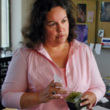What a plant knows: a field guide to the senses
Description
How does a Venus flytrap know when to snap shut? Can it actually feel an insect's tiny, spindly legs? And how do cherry blossoms know when to bloom? Can they actually remember the weather?
For centuries we have collectively marveled at plant diversity and form-from Charles Darwin's early fascination with stems to Seymour Krelborn's distorted doting inLittle Shop of Horrors. But now, in What a Plant Knows, the renowned biologist Daniel Chamovitz presents an intriguing and scrupulous look at how plants themselves experience the world-from the colors they see to the schedules they keep. Highlighting the latest research in genetics and more, he takes us into the inner lives of plants and draws parallels with the human senses to reveal that we have much more in common with sunflowers and oak trees than we may realize. Chamovitz shows how plants know up from down, how they know when a neighbor has been infested by a group of hungry beetles, and whether they appreciate the Led Zeppelin you've been playing for them or if they're more partial to the melodic riffs of Bach. Covering touch, sound, smell, sight, and even memory, Chamovitz encourages us all to consider whether plants might even beaware of their surroundings.
A rare inside look at what life is really like for the grass we walk on, the flowers we sniff, and the trees we climb,What a Plant Knows offers us a greater understanding of science and our place in nature.
More Details
Table of Contents
From the Book - First edition.
Subjects
Excerpt
Similar Titles From NoveList
Similar Authors From NoveList
Published Reviews
Booklist Review
There is nothing finer than leaning over a luscious, old-fashioned rose and deeply inhaling its intoxicating fragrance, but can that rose also detect one's equally delightful (one hopes) aroma? Gazing upon a sea of waving sunflowers is a sensory wonder, but can those sunflowers pick up on the color of the shirt one is wearing? Not exactly. A plant can, however, process odors through its type of olfactory stimulus receptors and can discern changes in the quantity, quality, and direction of light sources. Renowned in the field of plant bioscience, Chamovitz has made extensive research that has led him to conclude that plants interact with the world around them in ways that have direct correlations to how human beings process sensory information. In a lively and delightful discourse that aligns botany with human biology, he articulates his findings about plants and the senses in accessible, often whimsical observations that make complex science not only comprehensible but fun to ponder.--Haggas, Carol Copyright 2010 Booklist
Publisher's Weekly Review
An impressive amount of scientific information and research is packed into this slim volume about plants' perception, but whether this title will interest readers rests entirely on their pre-existing interest in "the parallels between plant and human senses." The author, the director of the Manna Center for Plant Biosciences at Tel Aviv University, devotes a chapter to each specific sense: what a plant sees, smells, feels, and hears, how it knows where it is, and what it remembers. Despite an overwhelming amount of detail about the world as seen from a plant's point of view and lucid descriptions of experiments, the stakes of why we should care if plants self-medicate, listen to music, or know to grow upwards are left unarticulated. In the most engaging section of the book, Chamovitz writes that plant memories are not "semantic or episodic memories... but rather procedural." Fans of botany and nature writing may be absorbed in learning about plant senses for their own sake, but the book is unlikely to appeal to nonbotanists. Agent: Laurie Abkemeier, DeFiore and Company. (June) (c) Copyright PWxyz, LLC. All rights reserved.
Kirkus Book Review
The science behind how a plant senses and adapts to its environment. Director of the Manna Center for Plant Biosciences at Tel Aviv University, Chamovitz realized early in life that "the genetic difference between plants and animals is not as significant as [he] once believed." Unlike animals, which can move to search for food, shelter or a mate, plants are confined to one spot. "Because of this," writes the author, "plants have evolved complex sensory and regulatory systems that allow them to modulate their growth in response to ever-changing conditions." Through extensive research and scientific models, Chamovitz explains in accessible language how plants have somewhat human-like sensory responses to stimuli. Plants "see" by showing evidence of phototropism, the bending of a plant toward what is now known as blue light, and plant growth is affected by red and far-red light. When leaf-eating insects attack a tree, the affected tree emits volatile chemicals into the air. Through "smell," this effectively warns neighboring trees of a possible attack. Using a Venus fly trap as a model, Chamovitz proves plants feel specific kinds of "touch"--a fly trap will not shut when rain drops hit it, but only when two of its tiny hair-like projections are touched within seconds of each other. By comparing human senses to the abilities of plants to adapt to their surroundings, the author provides a fascinating and logical explanation of how plants survive despite the inability to move from one site to another. Backed by new research on plant biology, this is an intriguing look at a plant's consciousness.]] Copyright Kirkus Reviews, used with permission.
Booklist Reviews
There is nothing finer than leaning over a luscious, old-fashioned rose and deeply inhaling its intoxicating fragrance, but can that rose also detect one's equally delightful (one hopes) aroma? Gazing upon a sea of waving sunflowers is a sensory wonder, but can those sunflowers pick up on the color of the shirt one is wearing? Not exactly. A plant can, however, process odors through its type of olfactory stimulus receptors and can discern changes in the quantity, quality, and direction of light sources. Renowned in the field of plant bioscience, Chamovitz has made extensive research that has led him to conclude that plants interact with the world around them in ways that have direct correlations to how human beings process sensory information. In a lively and delightful discourse that aligns botany with human biology, he articulates his findings about plants and the senses in accessible, often whimsical observations that make complex science not only comprehensible but fun to ponder. Copyright 2012 Booklist Reviews.
Publishers Weekly Reviews
An impressive amount of scientific information and research is packed into this slim volume about plants' perception, but whether this title will interest readers rests entirely on their pre-existing interest in "the parallels between plant and human senses." The author, the director of the Manna Center for Plant Biosciences at Tel Aviv University, devotes a chapter to each specific sense: what a plant sees, smells, feels, and hears, how it knows where it is, and what it remembers. Despite an overwhelming amount of detail about the world as seen from a plant's point of view and lucid descriptions of experiments, the stakes of why we should care if plants self-medicate, listen to music, or know to grow upwards are left unarticulated. In the most engaging section of the book, Chamovitz writes that plant memories are not "semantic or episodic memories... but rather procedural." Fans of botany and nature writing may be absorbed in learning about plant senses for their own sake, but the book is unlikely to appeal to nonbotanists. Agent: Laurie Abkemeier, DeFiore and Company. (June)
[Page ]. Copyright 2012 PWxyz LLC


































